This sumptuous portrait represents Christopher Musgrave (1664-1718), member of Parliament for Carlisle. Painted circa 1690, the beautiful rendering of the face is a feature of the work of John Riley, who was an outstanding native portrait painter amongst the legions of foreign painters who settled in England during the Restoration. It is easy to see why he was Painter in Ordinary to King Charles II in 1682, and later official court painter to King James II, King William and Queen Mary in 1689. John Riley painted a portrait of the sitter’s father, Sir Christopher Musgrave, 4th Baronet (c.1632-1704) (collection of the Earl of Dartmouth, 1838) around the same time as our portrait; it is possible that both portraits were painted simultaneously to mark the occasion in 1690 of Sir Christopher being elected MP for Westmoreland and the sitter in our portrait elected MP for Carlisle.
Christopher Musgrave was born at Carlisle Castle, the second son of Sir Christopher Musgrave, 4th Baronet (c.1632-1704) of Edenhall and his wife Mary Cogan (c.1636-1664). This marriage produced a son Phillip Musgrave (1661/4–1689), a daughter Mary Musgrave (1663-?), and the sitter in our portrait. Mary Cogan, died during childbirth at Carlisle Castle. Sir Christopher later married Elizabeth Francklyn (1648-1701) on 15th May 1671 and the couple had sons Joseph (1676-1757), Thomas Musgrave (1680-1756), George Musgrave (1682-1751), and a daughter DorothyMusgrave (1684-?) and by some accounts eight other children.
Our sitter died unmarried on 10th Sept 1718 and was buried in Westminster Abbey. His stone is just to the south of Gladstone. He left his Cumberland and Westmorland estates to the second son of his nephew Sir Christopher Musgrave, 5th Bt.; £4,000 to be divided among his nephew’s other children; his annuities of £400 from the Exchequer to his half-brothers Joseph and George; and the remainder of his estate, after his debts and a number of small legacies were paid, to Joseph.
The ancient Musgrave family had been elevated to the nobility when Richard Musgrave was created a Baronet in 1611 for services to the Crown - undoubtably the raising and leading of armies for the King. The original ancestral home was Hartley Castle, near Kirkby Stephen, Cumbria. After a marriage around 1549 of Thomas Musgrave to Joan, elder daughter and coheir of William Stapleton of Edenhall, the Musgraves made Edenhall in Cumberland their main residence. At the turn of the 20th century, several deaths in short succession meant that the heavy death duties financially crippled the family and the Edenhall was sold along with the other vast landed estates - the manor of Lazonby and the manor of Kirkoswald. A number of family paintings by Van Dyke, Brueghel, Lely, Holbein, Ramsay, Wissing, Riley etc were removed from Edenhall and sold by Sir Richard George Musgrave, 12th Baronet at Christies 4th December 1925.
Edenhall was the home of the notorious “Luck of Eden Hall”, an enamel and gilt glass beaker from the 14th century in pristine condition. It is reputedly one of the oldest glass vessels in existence. It is now in the Victoria and Albert museum in London.
John Riley was born in London in 1646. He began practising painting at a young age and was probably independently wealthy at this time. He studied painting under Isaac Fuller and Gerard Soest, but left them to set up his own practice as a portraitist when he was very young. He became a fashionable and very accomplished artist who attained a good practice among the gentry and aristocracy. At the height of his success in the 1680s, Riley charged around £20 for a three-quarter length portrait (described as half-length in the seventeenth century), a considerable amount of money at the time. His work was on a level with, and to some excelled, Sir Peter Lely; Riley’s portraits were unquestionably a better likeness. With more self-confidence Riley could have overtaken Lely in popularity. His influence was far and wide on British portraiture. His recorded pupils were Anthony Russell, Thomas Murray, Edward Gouge, and Jonathan Richardson Senior (1667–1745), who was the leading native-born portrait painter of the first forty years of the 18th century. Richardson married a niece of Riley, and he was himself the master of Thomas Hudson (who was in his turn the master of Sir Joshua Reynolds).
Riley was particularly skilled at rendering the sitter’s heads whilst leaving the draperies to his studio assistants. In about 1681 Riley engaged as his drapery painter John Closterman and later as partner working in conjunction. The formal partnership was dissolved after a couple of years, but Closterman continued to work and to live with Riley, and finished several of his pictures after his death. Riley also employed Lely's drapery painter for ‘postures’, John Baptist Gaspars. He was appointed Principal Painter to the King in 1688. He is known to have a good sense of the character of unpretentious men. Riley died in March 1691, and was buried in the church of St. Botolph, Bishopsgate, London.
This portrait by John Riley is of a type characteristic in the artist's oeuvre. It is datable to circa 1690, when the artist’s influence was at its height, and demonstrates the truthful likeness and attention to detail that are distinctive in the work of this painter. Riley’s sober style was in part why he was so popular with the more pragmatic and hard-headed sitters.
Held in a spectacular hand-carved and gilded 11cm deep frame, which is an outstanding work of art in itself.
Provenance: By descent within the Musgrave family until recent
Measurements: Height 96cm, Width 83cm, Depth 11cm framed (Height 37.73”, Width 32.75”, Depth 4.25” framed)



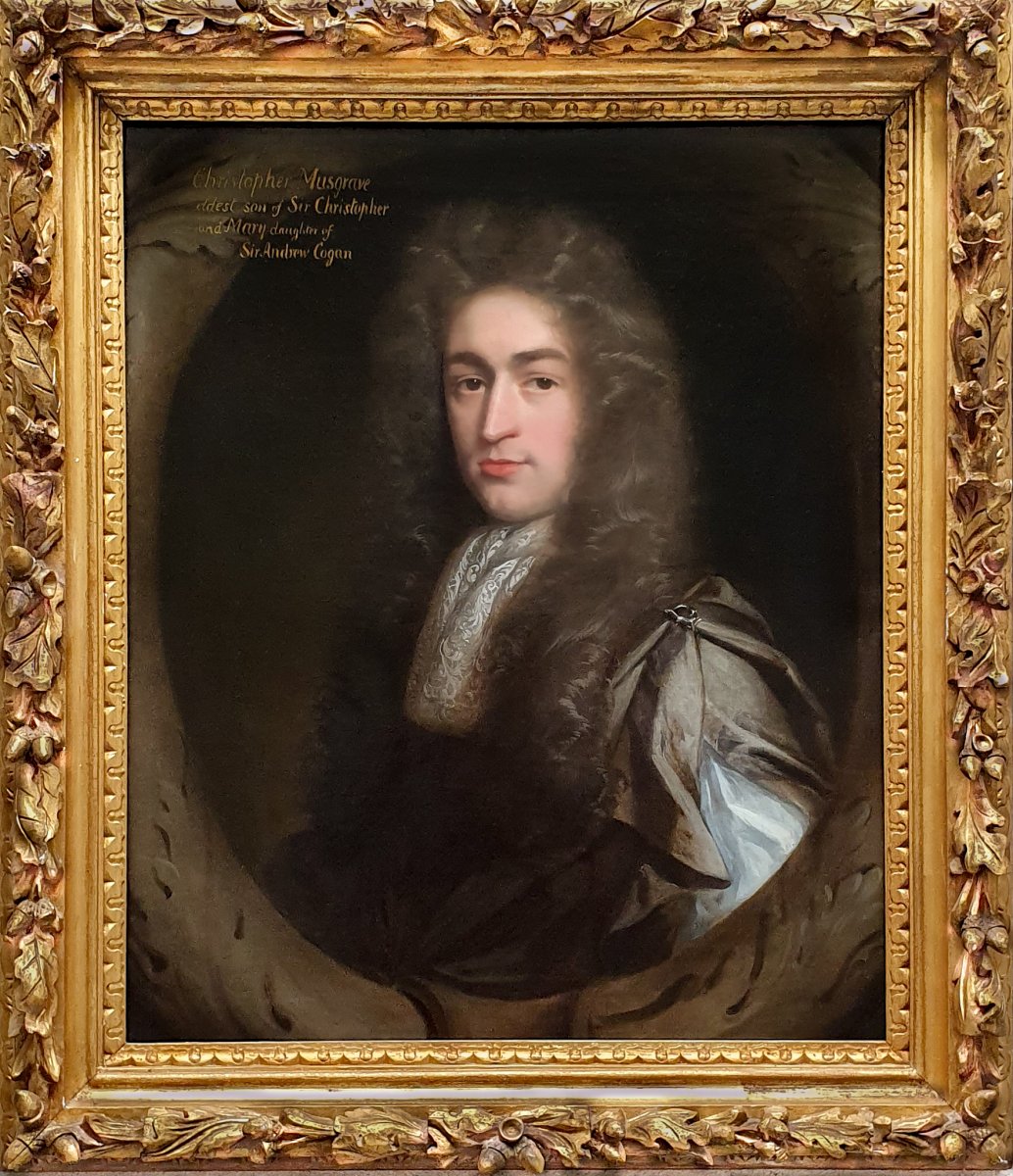




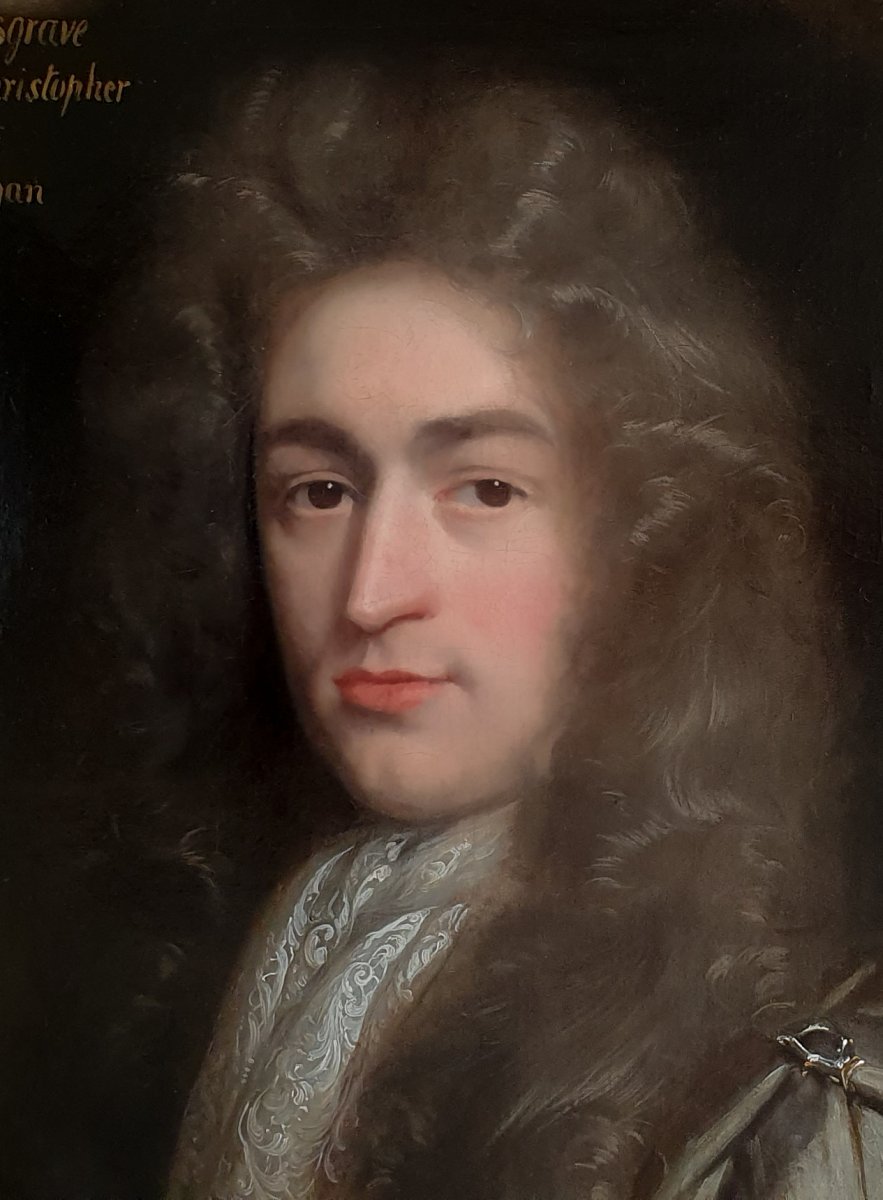


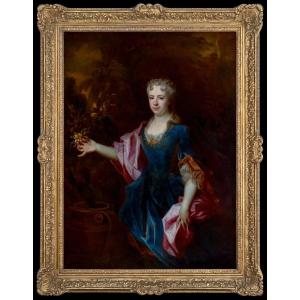

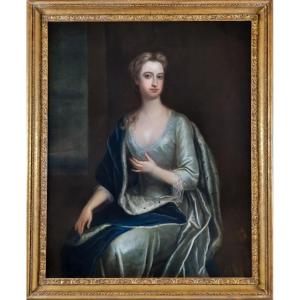



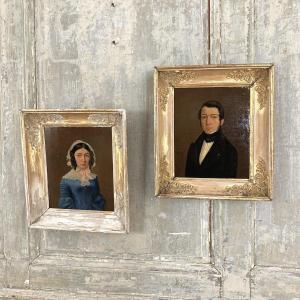
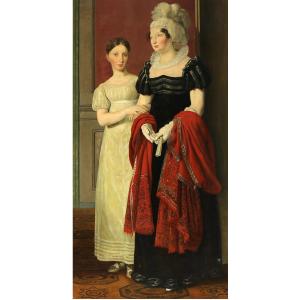


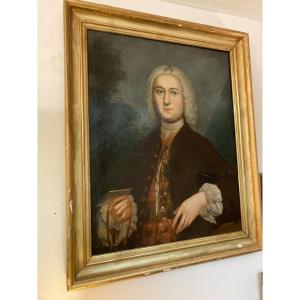




 Le Magazine de PROANTIC
Le Magazine de PROANTIC TRÉSORS Magazine
TRÉSORS Magazine Rivista Artiquariato
Rivista Artiquariato
